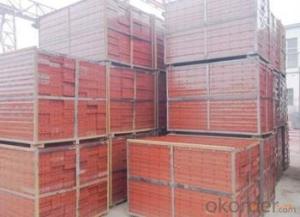CONCRETE FORMWORK SYSTEM FOR SALE
- Loading Port:
- Qingdao
- Payment Terms:
- TT OR LC
- Min Order Qty:
- 100 inch
- Supply Capability:
- 300000 inch/month
OKorder Service Pledge
OKorder Financial Service
You Might Also Like
· MWORK SYSTEM
Metric size | Inch size | ||
Height (mm) | Width(mm) | Height (feet) | Width (inch) |
100 | 4'' | ||
150 | 6'' | ||
200 | 8'' | ||
250 | 10'' | ||
2700 | 300 | 9 | 12'' |
350 | 14' | ||
400 | 16' | ||
450 | 18'' | ||
550 | 20'' | ||
550 | 22'' | ||
600 | 24'' | ||
100 | 4'' | ||
150 | 6'' | ||
200 | 8'' | ||
250 | 10'' | ||
2400 | 300 | 8 | 12'' |
350 | 14' | ||
400 | 16' | ||
450 | 18'' | ||
550 | 20'' | ||
550 | 22'' | ||
600 | 24'' | ||
100 | 4'' | ||
150 | 6'' | ||
200 | 8'' | ||
250 | 10'' | ||
1800 | 300 | 6 | 12'' |
350 | 14' | ||
400 | 16' | ||
450 | 18'' | ||
550 | 20'' | ||
550 | 22'' | ||
600 | 24'' | ||
100 | 4'' | ||
150 | 6'' | ||
200 | 8'' | ||
250 | 10'' | ||
1500 | 300 | 5 | 12'' |
350 | 14' | ||
400 | 16' | ||
450 | 18'' | ||
550 | 20'' | ||
550 | 22'' | ||
600 | 24'' | ||
100 | 4'' | ||
150 | 6'' | ||
200 | 8'' | ||
250 | 10'' | ||
1200 | 300 | 4 | 12'' |
350 | 14' | ||
400 | 16' | ||
450 | 18'' | ||
550 | 20'' | ||
550 | 20'' | ||||||||||||||||||||||||||||||||||||||||||
550 | 22'' | ||||||||||||||||||||||||||||||||||||||||||
600 | 24'' | ||||||||||||||||||||||||||||||||||||||||||
100 | 4'' | ||||||||||||||||||||||||||||||||||||||||||
150 | 6'' | ||||||||||||||||||||||||||||||||||||||||||
200 | 8'' | ||||||||||||||||||||||||||||||||||||||||||
250 | 10'' | ||||||||||||||||||||||||||||||||||||||||||
900 | 300 | 3 | 12'' | ||||||||||||||||||||||||||||||||||||||||
350 | 14' | ||||||||||||||||||||||||||||||||||||||||||
400 | 16' | ||||||||||||||||||||||||||||||||||||||||||
1. Manufacturer Overview |
|
|---|---|
| Location | |
| Year Established | |
| Annual Output Value | |
| Main Markets | |
| Company Certifications | |
2. Manufacturer Certificates |
|
|---|---|
| a) Certification Name | |
| Range | |
| Reference | |
| Validity Period | |
3. Manufacturer Capability |
|
|---|---|
| a)Trade Capacity | |
| Nearest Port | |
| Export Percentage | |
| No.of Employees in Trade Department | |
| Language Spoken: | |
| b)Factory Information | |
| Factory Size: | |
| No. of Production Lines | |
| Contract Manufacturing | |
| Product Price Range | |
Send your message to us
CONCRETE FORMWORK SYSTEM FOR SALE
- Loading Port:
- Qingdao
- Payment Terms:
- TT OR LC
- Min Order Qty:
- 100 inch
- Supply Capability:
- 300000 inch/month
OKorder Service Pledge
OKorder Financial Service
Similar products
New products
Hot products
Hot Searches
Related keywords























